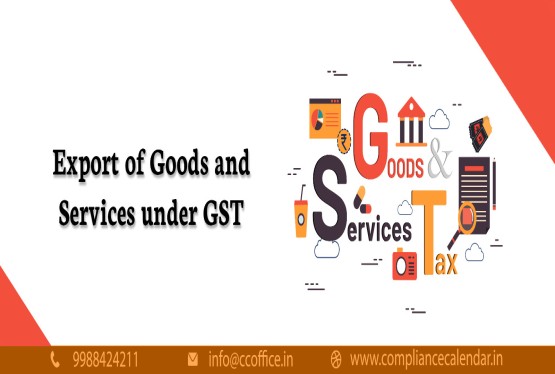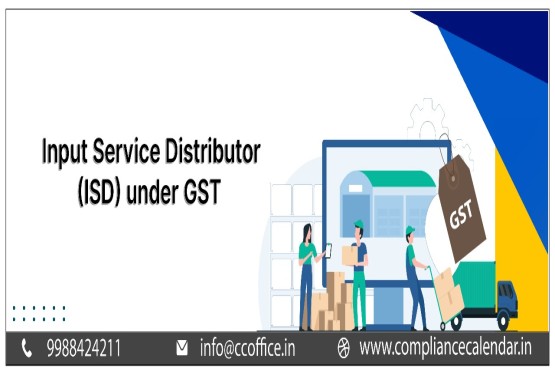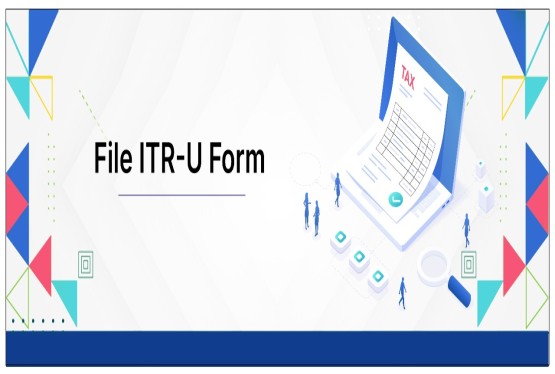Goods and Services Tax (GST) has completely changed the tax system in India and the important part in this change is the rectification of transactional errors through Debit Notes, Credit Notes, and Revised Invoices. These documents play an important role in correcting mistakes in invoices, adjusting tax liabilities, and ensuring seamless input tax credit. In this article we will discuss the concept, usage, and implications of Debit Note, Credit Note & Revised Invoice under GST, providing clarity on when and how these documents are used and their legal provisions.
What is a Credit Note?
A Credit Note is a document issued by a seller to a buyer to reflect a reduction in the amount payable by the buyer. This usually happens when the value of goods or services invoiced is more than what was actually supplied, or when the goods supplied were defective or returned by the buyer. For example, If a seller invoices a buyer for 10,000 units but 1,000 units are later returned due to defects, the seller issues a credit note for the returned quantity.
Conditions under GST: A credit note must be issued under GST when:
-
Goods or services have been supplied, and a tax invoice has already been issued.
-
The taxable value or tax charged in the invoice exceeds the actual supply value or applicable tax.
-
The buyer returns the goods or claims a price reduction due to inferior quality.
The issuance of a credit note allows the seller to reduce their output tax liability accordingly.
What is a Debit Note?
A Debit Note is a document issued by a buyer or a seller to notify an upward revision in the invoice value. It can be used by the buyer when returning goods or requesting a refund, or by the seller when additional charges or under-invoicing issues arise. For example, If the seller mistakenly charges less on an invoice, and later realizes the discrepancy, a debit note is issued to the buyer for the shortfall.
Conditions under GST: A debit note is issued when:
-
A tax invoice has already been raised.
-
The value of goods or services or the tax amount charged is less than what it should be.
-
The supplier needs to increase the taxable amount and accordingly revise the tax liability.
Reasons for Issuing Debit Note or Credit Note
Errors in business transactions are common. The following reasons warrant the issuance of debit or credit notes:
-
Overcharging or Undercharging:
-
If the seller overcharges, a credit note is issued.
-
If the seller undercharges, a debit note is issued.
-
Goods Returned by Buyer: In case of goods being returned due to quality issues or other reasons, the seller issues a credit note.
-
Post-Invoice Discounts: A discount offered after invoice generation can be accounted for using a credit note.
-
Additional Charges: If extra expenses like shipping or packaging are incurred post-invoicing, a debit note is issued to recover those.
How Debit and Credit Notes Are Issued: Buyer & Seller Roles
(1) When Buyer’s Obligation to Seller Reduces
After an invoice is issued, the buyer may find that goods are defective or the price is not as agreed. The buyer can issue a debit note to reduce the value of the invoice. In return, the seller issues a credit note acknowledging the adjustment.
This results in a reduced credit balance in the seller's books, lowering the amount payable by the buyer.
(2) When Buyer’s Obligation to Seller Increases
Sometimes, after the invoice is raised, the seller realizes that they have undercharged for goods or services or needs to bill for extra goods. In such a case, the seller issues a debit note. The buyer may then issue a credit note to accept this revision. This increases the buyer’s liability and the seller’s receivable amount.
Debit Note vs Credit Note: Key Differences
|
Particulars |
Debit Note |
Credit Note |
|
Who issues it? |
Buyer or seller |
Seller |
|
Purpose |
To increase invoice value |
To decrease invoice value |
|
When issued? |
Additional goods or underbilling |
Returns, discounts, overbilling |
|
Impact |
Increases buyer's liability |
Reduces buyer's liability |
|
Accounting Entry |
Dr. Buyer’s Account, Cr. Sales |
Dr. Sales Return, Cr. Buyer Account |
These differences help distinguish how these documents affect business transactions and taxation under GST.
Format of Debit Note and Credit Note
Though no fixed format is mandated under GST law, the following details must be included:
-
Mention “Debit Note” or “Credit Note” clearly
-
Name, address, and GSTIN of the supplier
-
Document serial number (alphanumeric, max 16 characters)
-
Date of issue
-
Name and GSTIN/UIN of the recipient
-
Original invoice number and date
-
Taxable value, rate of tax, and tax amount adjusted
-
Signature or digital signature of the supplier or authorized representative
Time to Issue Debit Note and Credit Note
Under GST, there is no fixed time limit to issue a debit note or credit note. However, reporting in returns is time-bound:
They must be declared:
-
By September following the end of the financial year in which the supply was made, or
-
Before filing the annual return,
Whichever is earlier.
Failure to report these notes within the above timeline may result in loss of ITC (Input Tax Credit) benefits or tax adjustments.
Supplementary Invoices and Their Uses
A Supplementary Invoice is issued when any discrepancy is found in the original tax invoice, such as incorrect tax rate, value, or omission of details. It serves as an additional document and can be in the form of a debit or credit note depending on the nature of the correction. This ensures the buyer or seller’s tax liabilities or credits are accurately reflected in the GST system.
Revised Invoice under GST
During the initial rollout of GST, transitional provisions were created for taxpayers migrating from the old regime to GST. Taxpayers with provisional registration were required to issue Revised Invoices.
Once a permanent registration certificate is issued, all invoices issued between:
-
The effective date of GST implementation, and
-
The date of issue of the GST registration certificate, must be revised within 30 days.
How to Revise GST Invoices?
To revise an invoice:
-
Check if there’s any mismatch or missing detail in the original invoice.
-
Use the same invoice series and number, but indicate that it is a revised version.
-
Include required details:
-
Reference to the original invoice
-
Correct supplier and buyer GSTIN
-
Accurate taxable value, tax rate, HSN/SAC codes
-
Mention revised invoice clearly
-
Make sure the revised invoice is issued within 30 days from the date of permanent GST registration.
When Should a Revised GST Invoice be Issued?
A revised invoice should be issued for all transactions made between:
-
The date of GST implementation, and
-
The date when the permanent registration certificate is issued,
provided the provisional GST registration was in place. These invoices must be updated and reissued within 30 days of receiving the final GST certificate.
Revised Invoice’s Format
The GST Law prescribes that a revised invoice should include:
-
Label “Revised Invoice” clearly
-
Supplier’s name, address, GSTIN
-
Serial number for FY
-
Date of issue
-
Buyer details (name, address, GSTIN)
-
Original invoice reference
-
Corrected values
-
Signature of supplier or authorized representative
What Differentiates a Supplemental Invoice from a Revised Invoice?
|
Particulars |
Revised Invoice |
Supplementary Invoice |
|
Meaning |
Issued for transactions during the provisional registration period |
Issued to rectify or supplement errors in earlier invoices |
|
Period Coverage |
From GST rollout to permanent registration |
Not time-based; invoice-specific |
|
Purpose |
Align with GST compliance post-registration |
Adjust under/overcharging, omitted details |
|
Recipients |
Both registered and unregistered |
Both registered and unregistered |
Conclusion
The use of Debit Note, Credit Note & Revised Invoice under GST is essential for maintaining accurate books and fulfilling compliance obligations. These documents offer taxpayers flexibility to amend genuine transactional errors while ensuring transparency in input tax credit and output tax liability. Taxpayers must ensure proper documentation, timely issuance, and accurate GST return filing to leverage the benefits provided under GST.
For businesses looking for expert assistance in GST compliance, including issuing Debit Notes, Credit Notes, and Revised Invoices, Compliance Calendar LLP provides end-to-end support to ensure that your company stays fully compliant with GST laws. You can book a consultation through email info@ccoffice.in or Call/Whatsapp at +91 9988424211.
FAQs
Q1. What is the purpose of issuing a Debit Note under GST?
Ans. A debit note is issued under GST to record an increase in the taxable value or tax amount previously invoiced. It allows the supplier to revise their tax liability when undercharged or when additional goods or services are supplied.
Q2. When is a Credit Note issued under GST?
Ans. A credit note is issued when the value of goods or services supplied is overcharged or when goods are returned by the buyer due to defects or dissatisfaction. It helps reduce the seller’s output tax liability.
Q3. Can a buyer issue a Debit Note under GST?
Ans. Yes, a buyer can issue a debit note to the seller in situations like goods being returned or discounts being claimed. The seller may then issue a credit note to acknowledge the adjustment.
Q4. Is there a deadline for reporting a Debit Note or Credit Note under GST?
Ans. Yes, all debit and credit notes must be reported in the GST return of the month in which they are issued, but no later than September following the end of the financial year or the date of filing the annual return, whichever is earlier.
Q5. What is a Revised Invoice under GST?
Ans. A revised invoice is issued by a supplier who was granted provisional GST registration and later received a permanent registration certificate. It replaces the original invoice for supplies made during the interim period and must be issued within 30 days of receiving the certificate.
Q6. What is the difference between a Revised Invoice and a Supplementary Invoice?
Ans. A revised invoice corrects invoices issued during the provisional GST registration period. A supplementary invoice is used to rectify deficiencies in an already issued tax invoice, such as tax errors or omission of items, regardless of the registration timeline.
Q7. Is there a specific format for Debit and Credit Notes under GST?
Ans. While GST law does not prescribe a fixed format, debit and credit notes must include details like the document title, supplier and recipient GSTIN, original invoice reference, tax amounts, and the supplier’s signature.
Q8. Can a Debit Note be issued for services under GST?
Ans. Yes, debit notes can be issued for both goods and services if there is a need to revise the invoice value or tax amount charged in the original invoice due to an error or additional charges.









_crop10_thumb.jpg)


















































































_for_FY_2025-26_crop10_thumb.jpg)












_learn_crop10_thumb.jpg)








_Filing_Due_Dates_for_FY_2024-25_learn_crop10_thumb.jpeg)



















